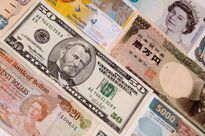
What Is a Forex Mini Account
A forex mini account is a foreign exchange (FX) account which allows beginner traders to enter the currency market using smaller size (mini lot) positions and trading quantities, thus lowering the funds at risk and limiting potential losses.
Forex trading accounts are often offered in three sizes: standard; mini; and macro. The mini account allows traders to enter into contract sizes of 10,000 base currency units rather than the 100,000 units of a standard lot. Likewise, the percentage in point (pip) movement cost or reward is smaller, at $1 instead of the standard $10 per tick. Some platforms now offer even smaller, micro lot forex trading at 1,000 lot sizes and nano lots of just 100 units.
Key Takeaways
- A forex mini account allows beginners to engage in foreign exchange trading account tusing smaller trading sizes, known as mini lots.
- Mini lots are one-tenth the size of a standard lot, meaning they represent 10,000 currency units instead of 100,000 units.
- Trading in mini lots can afford greater forex diversification, as the same amount of capital can be spread across a greater number of currency pairs.
Understanding Forex Mini Accounts
A forex mini account appeals primarily to beginning traders because it offers smaller contract sizes and therefore limits the amount of potential losses they take on as they gather forex trading experience. For the most part, mini account holders have access to the same markets and trading tools as do regular account holders such as charts, trading platforms, and customer support.
Standard forex accounts require order lots of 100,000 base units, Mini accounts are standardized at 10,000 lot trades, meanwhile the even smaller micro accounts allow 1,000 base unit trades. What this means is that standard accounts must enter orders in multiples of 100,000, whereas mini account holders place orders in multiples of 10,000.
The smaller unit size allows traders to better control their risk and also lets more experienced traders make more diversified bets by spreading the same amount of investible funds over a wider array of currency pairs.
Pip for the Forex Mini Account
The forex market trades in currency pairs with a quoted spread amount, such as EUR/USD 1.3000. Each trade is betting that one currency will change in their relationship to the other. This change in rate is known as the percentage in point (pip) movement. In the EUR/USD 1.3000 example, the trader thinks the base currency, the euro, will rise in value against the quote currency, the U.S. dollar. The trader is long the euro and short the USD. The rate of the quote shows to four decimal places, except for the rates of the Japanese Yen, which is two decimal places in length.
Forex markets measure price changes by the percentage in point pip to the fourth place, which represents the smallest possible change in price for a given currency. The changes in currency pairs are in fractions of a cent, so the average amount of money gained or lost on the trade of a single unit of currency tends to be vanishingly small, thus the 100,000, 10,000 and 1,000 quantity requirements. Forex brokers, who provide currency traders with access to a trading platform, make up for this by aggregating currency units into lots which provide traders with leverage.
The value of a pip fluctuates based on with the base currency funding of your account, and the currency pairs that you are trading. Where the account has a U.S. dollar base funding and the USD is the quote currency, one pip will be equal to $10 for standard accounts, $1 for Mini forex accounts, and $0.10 for Micro accounts. For pairs where the quote currency is from another nation, the pip will vary with that rate.
Example of Using a Forex Mini Account
A standard trade lot for someone using a standard USD base funded forex account is 100,000 units and therefore requires a substantial amount of capital to make an unleveraged purchase. Using the earlier example, the trade for the EUR/USD 1.3000 the euro moved up to 1.3085 by when the contract closes, making the pip .0085 (1.3000 – 1.3085 = .0085).
- Standard account 100,000 x .0085 = $850 earnings
- Mini account 10,000 x .0085 = $85 earnings
- Micro account 1,000 x .0085 = $8.50 earnings
Now, say the euro trade moved downward to 1.2995 giving a .0005 pip.
- Standard account 100,000 x .0005 = $50 loss
- Mini account 10,000 x .0005 = $5 loss
- Micro account 1,000 x .0005 = $0.50 loss
Forex brokers typically offer leverage on all types of accounts. Leverage allows traders to participate in larger or higher-risk trades with a smaller personal capital outlay. Leverage is like a loan from the Forex broker.
The broker will loan the trader enough money to take a larger position in the trade than what the trader’s account funding would allow, otherwise. For example, a broker offering 100:1 leverage would allow a trader in a mini forex account to control a single 10,000-share lot with a capital outlay of only 1,000 units.
Leverage magnifies both gains and losses. So, using the above example, a $1,000 outlay would earn $85 at 100:1 leverage. A .0005-pip move against the trader would likewise cost $5, putting significantly more initial capital at risk.


